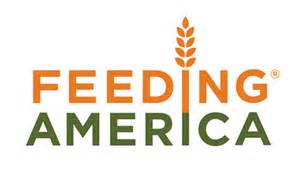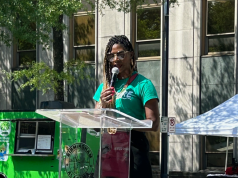 Talking about childhood hunger creates
teachable moments between parents & children
Talking about childhood hunger creates
teachable moments between parents & children
The struggle is real. There are a ton of people in our neighborhood who face hunger. Having a sound effective relationship with your children is priceless.
Knowing when to talk to your children about serious problems they may face sooner rather than later can be difficult for parents.
While burdening a child with a complex issue at too early of an age may frighten or confuse them, it’s important to ensure they’re prepared for what they most certainly will be exposed to, says former Peace Corps volunteer and children’s author Lois Brandt.
“When I was a young girl, I opened my best friend’s refrigerator and discovered that her family had no food,” Brandt says. “I didn’t know what to do as a child facing this horrible issue. I didn’t know how to help my friend.”
Twenty percent of American children – one of every five — live in households that struggle to afford food, according to a 2012 report from the United States Department of Agriculture.
Chances are that your child will have classmates whose families are struggling to put food on the table.
“Children follow where parents lead. Talking to your children about hunger shows them your empathy for others; it prepares them for the moment they may encounter hunger among their friends or classmates, and it assures them that they can talk to their parents about this problem,” says Brandt, author of “Maddi’s Fridge,” (www.MaddisFridge.com), colorfully illustrated children’s picture book inspired by Brandt’s experience with her childhood friend.
She offers tips on how to talk to children about the widespread problem of child hunger.
• Young children may not understand complex issues; keep the discussion age-appropriate. While it’s important to be honest with children about issues they may encounter, adults do not have to scare or confuse them.
“When I read ‘Maddi’s Fridge’ in classrooms,” Brandt says. “I’ll ask what the book is about. The very first hand in the air always says ‘friendship.’ I was very careful to ensure that the story gently entertains. First- through fourth-graders laugh at eggs in backpacks and Vin Vogel’s great illustrations.”
• Have a brainstorming session on what makes a good friend. This puts the discussion in terms that children are comfortable with. Talk about times when you were a child and helped your friends. Ask your child to tell you about a time he or she helped a friend on the playground or in the classroom. Emphasizing the web of relationships we all live in will empower your child with a sense of community, even when facing large problems.
• Discuss with your child ways they can help. Children want to know where they fit, what their role is. Let you child know that he or she can be part of the fight against childhood hunger. Bring food to a food bank, take meals to a needy family, support food drives by your school and religious organization.
Suggestions for ways to help can be found on websites for organizations like Feeding America (www.FeedingAmerica.org), a national network of food banks, or on Maddisfridge.com.



